We welcome the start of another season in football within 10 days of Italy winning EURO 2020. The Belgian Super Cup was played by Club Brugge – who have played against the likes of Real Madrid, PSG, and Borussia Dortmund in recent years – and Genk, who won the Beker Van Belgie last season.
The game was a 3-2 thriller at Jan-Breydel-Stadion as Philippe Clement’s team played some promising football. This tactical analysis will explain the tactics of Brugge and how they release the potential of this young group of players.
Lineups
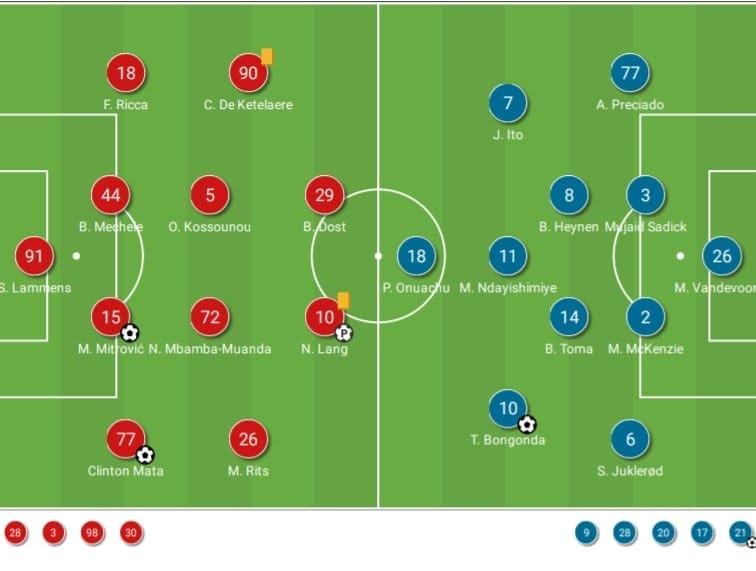
Brugge played with an experienced back four in this game as all their defenders were at least 26-year-old. However, starting players in the other positions were mostly younger, including Noa Lang from Ajax. In midfield, the 16-year-old Noah Mbamba-Muanda started with Odilon Kossounou – these two young players were very energetic and their midfield coverage was the key to the victory.
Genk started in a 4-2-3-1 with new signings Mike Ndayishimiye and Mujaid Sadick. The team also had Paul Onuachu playing as the centre-forward. Onuachu scored 35 goals in all competitions last season but his threat was limited by Brugge’s defence in this game.
Impact of the right-back and runs behind
Brugge mostly started their construction of the attack from the second phase as Genk were not pressing too high. Clement tried a very aggressive 4-2-2-2 or even a 4-2-4 to reach numerical equality with the back four, and also used the right-back as an outlet to move the ball forward.
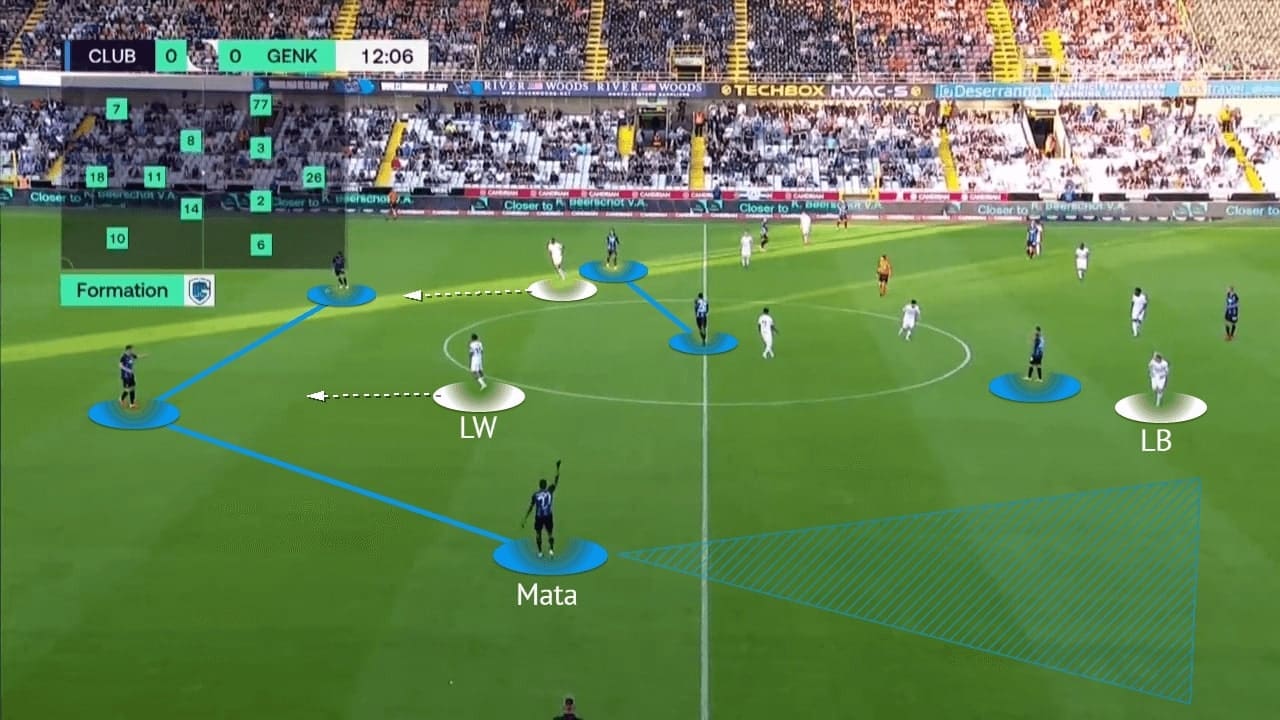
Genk were in a 4-2-3-1 formation but the main problem was the defensive positioning of the left-winger, Theo Bongonda. He was too close to the centre-backs and he never got tight enough to limit the space in which Clinton Mata could receive the ball. Therefore, Brugge could use that flank to develop their attack and easily move into the final third.
The above image shows the Genk left-winger shutting the half-space channel initially. When he pressed, he went to the centre-back vertically but that would not close the angle to wide zones. Brugge very simply dropped Mata to form a back three, and they could use the right-back in the half-space to break the press. You could see Mata raising his hand to ask for the ball as he was unmarked.
Genk could only stop Mata by committing the left-back out but that would enlarge the channels between the back four. Initially, Simon Juklerød was drawn to the centre by the narrow winger, so Mata had space to play out wide when he received.
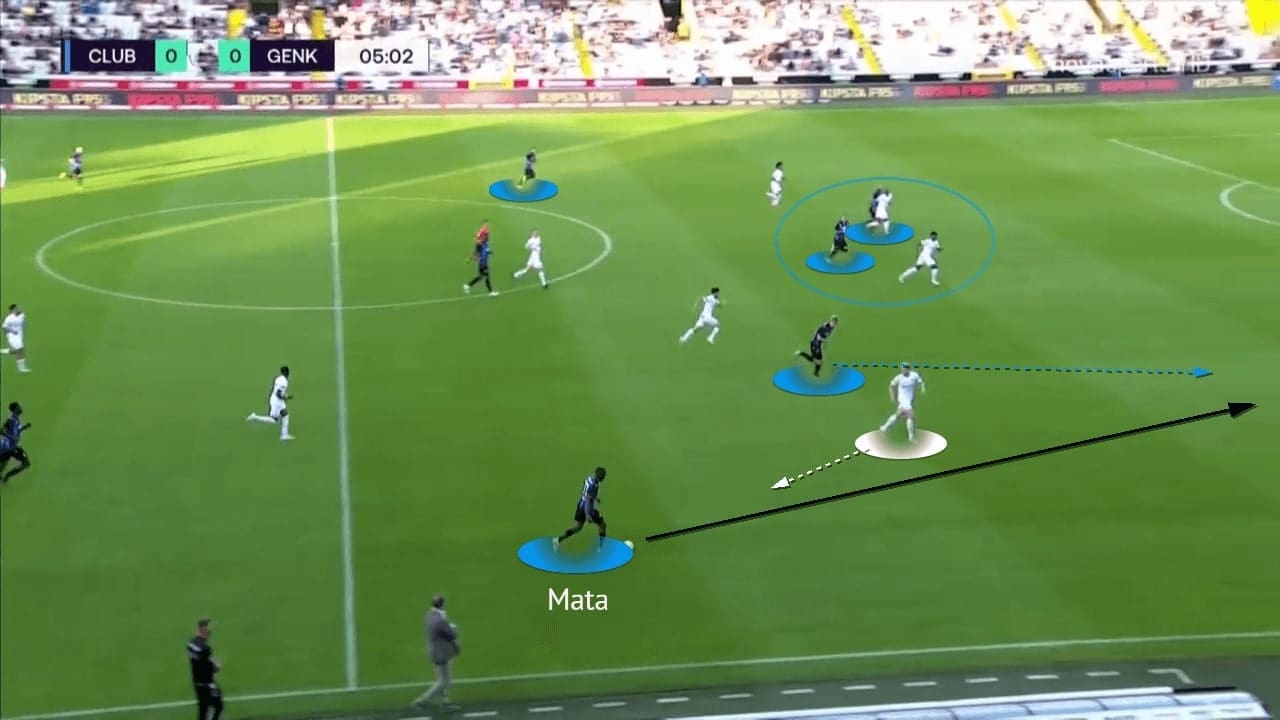
When Mata was on the ball, he mainly looked for the runners behind to send the team into the final third quickly. Usually, the wingers would be running from inside-out to find space behind the full-backs. For example, Charles De Ketelaere made that run on the blindside of left-back as Juklerød was looking at Mata.
On the far side, the impact of a 4-2-4 matching the back four was very clear. The narrow shape of Brugge prevented the Genk backline from shifting across as each defender was occupied by an attacking player individually. Now, in the centre, both centre-backs had to deal with a forward and the right-back was on the left-winger – they could not move away to cover the left-back when Brugge played down the flank.
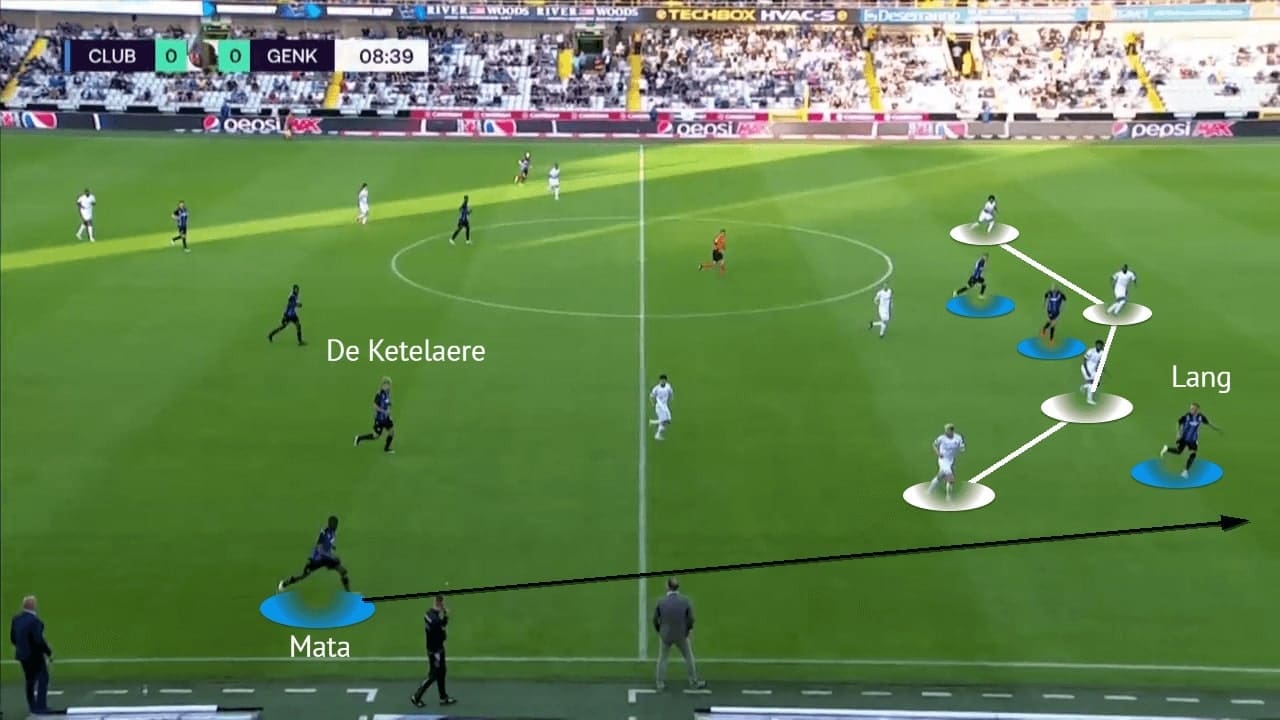
Brugge’s attacking players were fluid in their positioning – sometimes the forward runs might not be provided by the winger, but by the forwards instead. In this example above, De Ketelaere dropped deeper, but immediately Lang filled that role to get behind the defence – the concepts were all the same: two players occupy two centre-backs, Mata to draw the left-back’s attention so they could use his blindside.
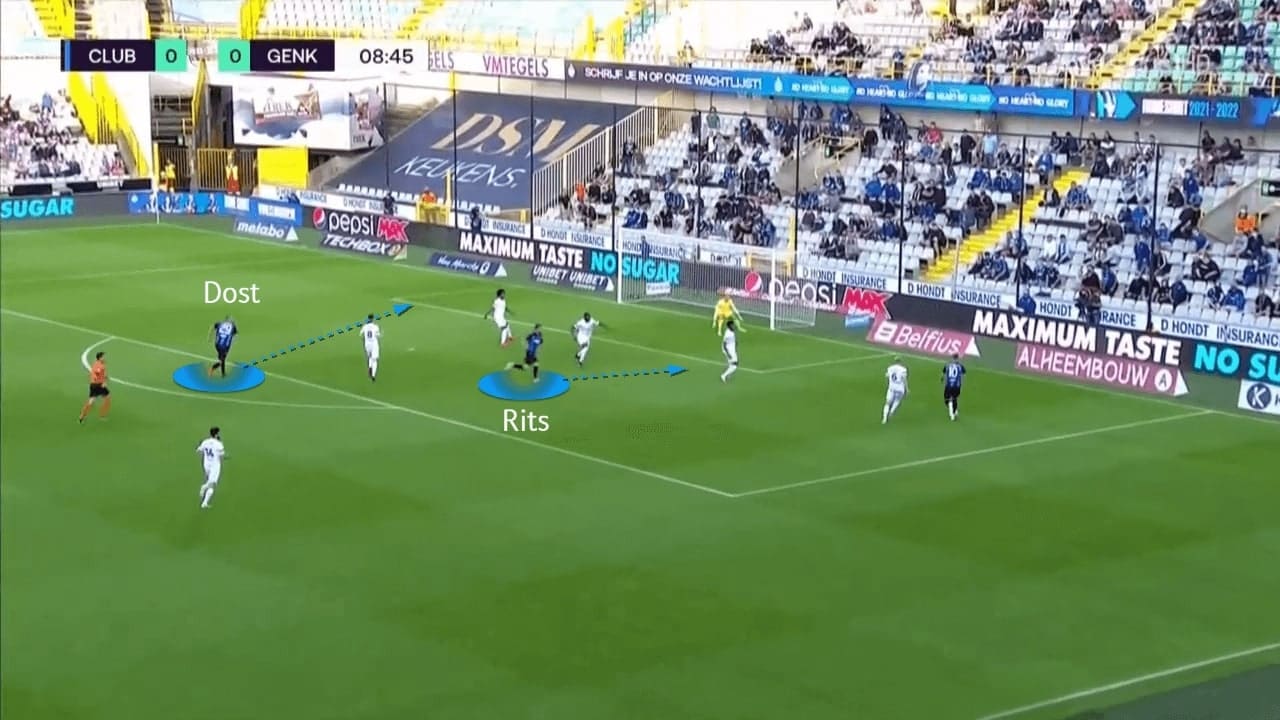
When Lang received behind the ball the left-back, the other two attackers also joined and got into the penalty area. At this stage, Brugge players had some freedom and they could attack with diverse angles in different directions. In the screenshot, Bas Dost and Rits split to front and far-post, respectively.
However, Brugge were not effective enough in the final third – their final passes were a bit casual and they would be creating even more on another day.
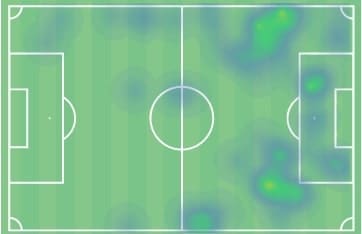
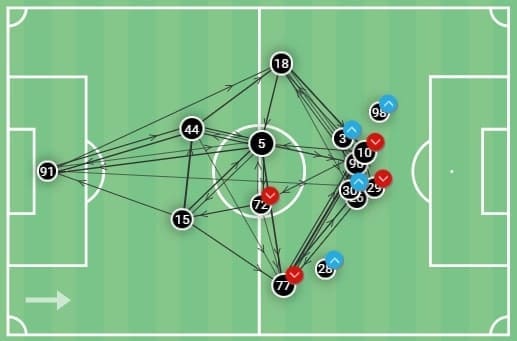
Midfield coverage in the press
Defensively, Brugge organized in a 4-2-2-2 system that became a tough task for Genk to beat. It was stubborn, compact, dominating the centre, locking all central spaces and passing lanes to spaces between the lines.
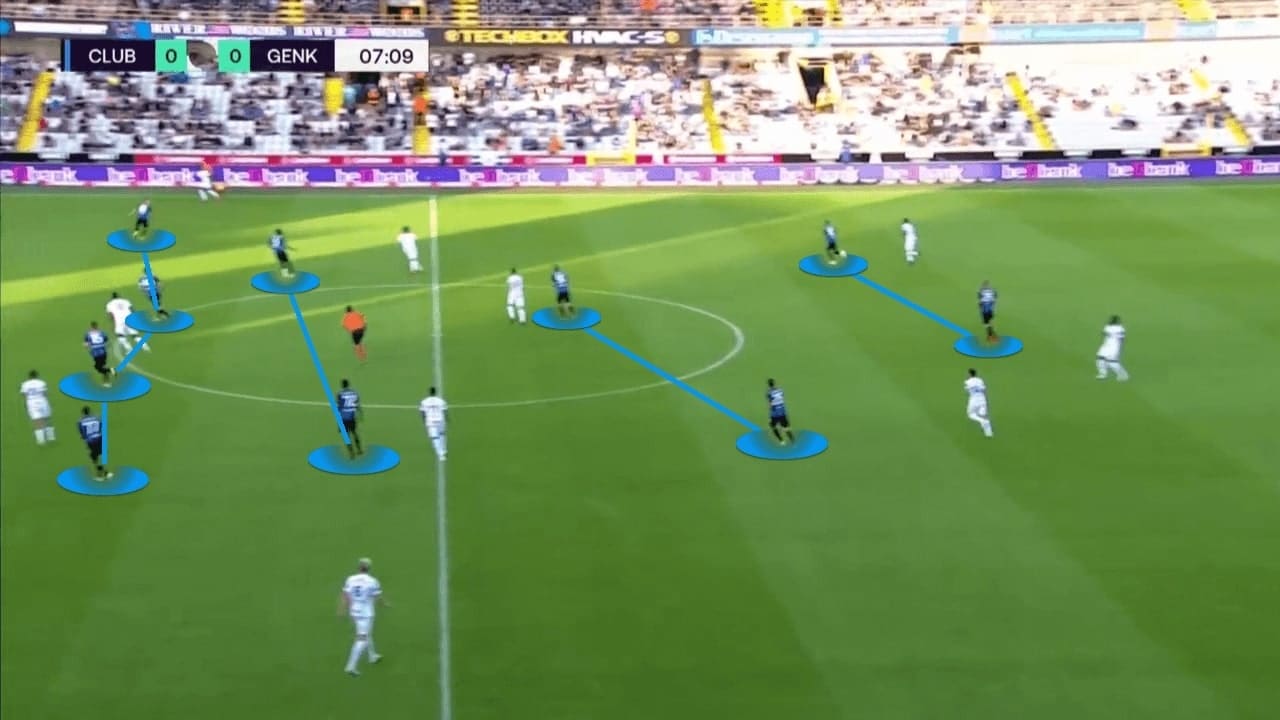
The image above shows the 4-2-2-2 defensive system of the Brugge. As they had only two midfielders, Clement did not want to lose a man in the centre against a 4-2-3-1, so both Kossounou and Mbamba-Muanda stayed deep to protect spaces in front of centre-backs. To avoid being stretched horizontally and vertically, both wingers stayed narrowly to form the second line of defence, so Brugge would have four players in the midfield.
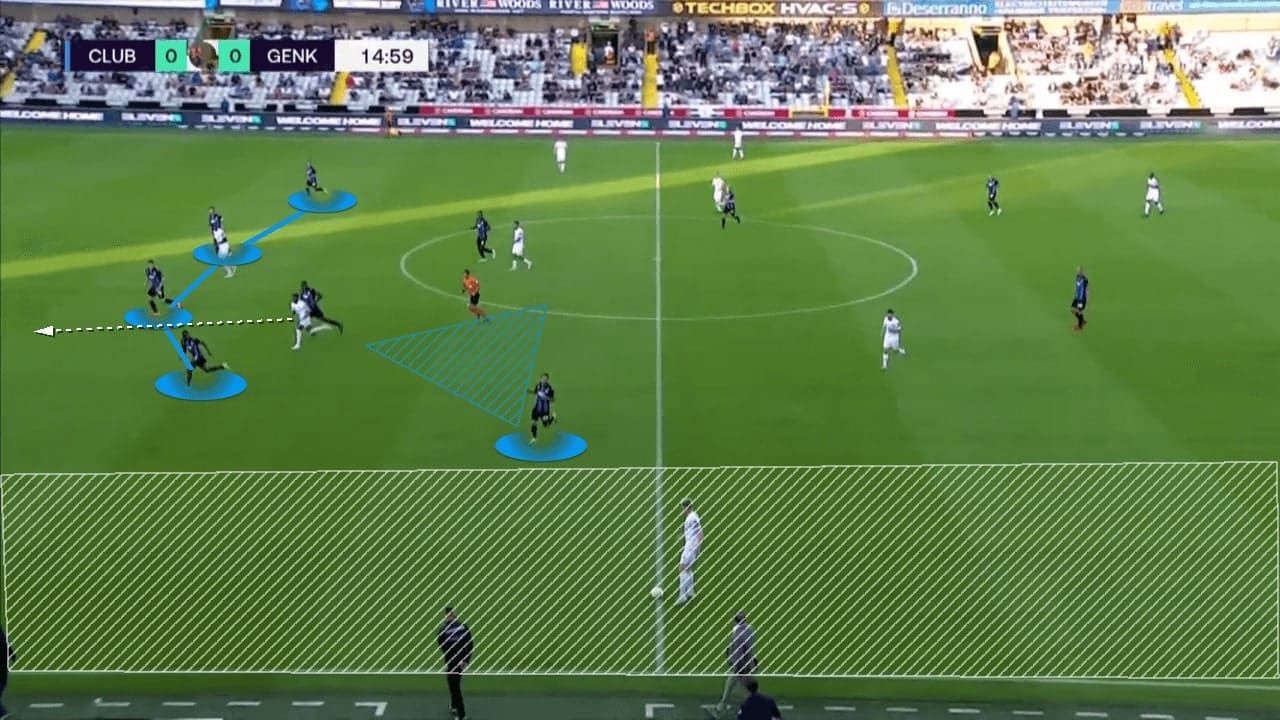
Brugge players were very careful when defending as they did not want to be drawn out of position. In the early stages, the full-backs stuck with the centre-backs tightly to keep a compact back four. Even without the wingers to shut the wide spaces, they denied any kind of through balls because the channels were too small to play into.
Here, Brugge inevitably conceded wide spaces as the 4-2-2-2 system only had central protection. Genk’s left-back Juklerød was usually the free player in the attack (in the white zone where Brugge could not cover). But Juklerød would not be a progressive option in the above situation as Brugge were good at defending spaces behind – Matej Mitrović was very good at covering the full-back while Mata did not move away from the centre-backs. Even if the inverted-winger of Genk (Bongonda) was found, he would be struggling to cope with the pressure from behind.
Furthermore, Brugge patiently avoid defenders engaging the full-backs, then using the wingers to press Juklerød. Because of the initial central position, the winger was shadowing the central zone when approaching the full-back – this limited the angle of the pass. So, Juklerød had to slow down and go back and Brugge had the time to reorganize the block.
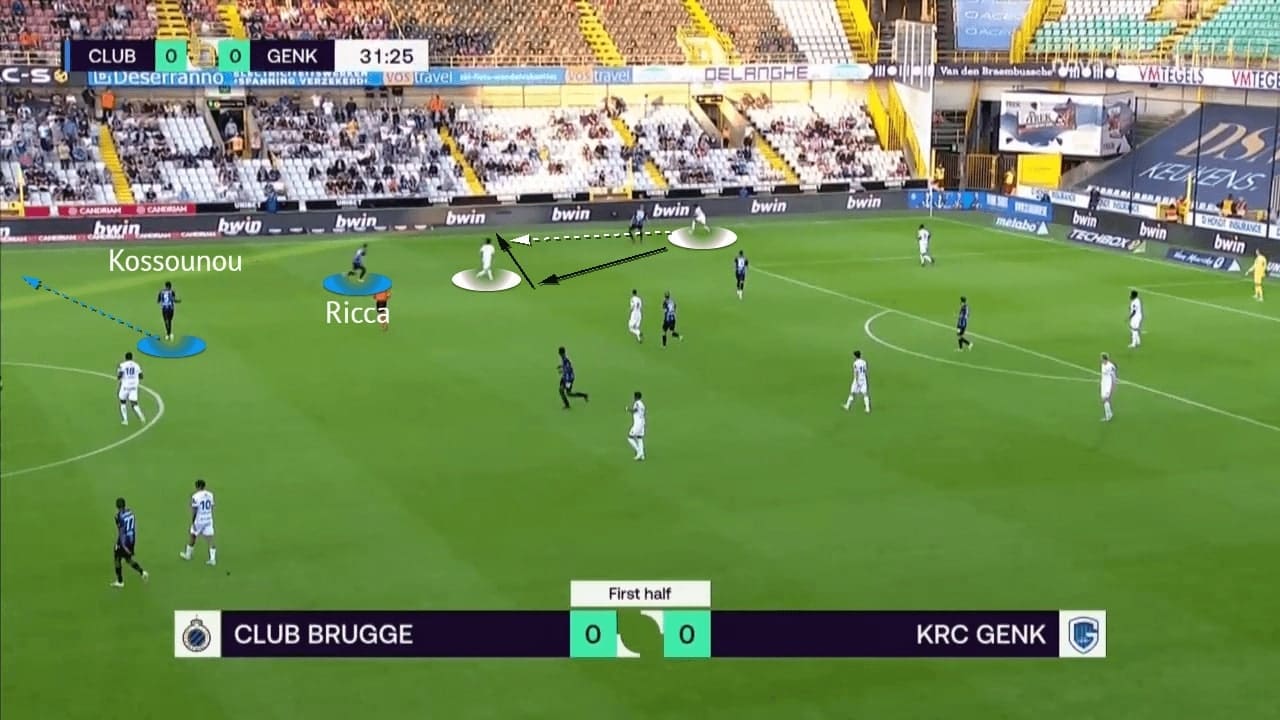
Using deep midfielders was key to Brugge’s success as they covered spaces very well. As the game developed, Clement wanted to apply more pressure to the wide spaces so the full-backs were allowed to step out of position and closed the opposition down in advance.
Here, in this image, Brugge’s left-back Federico Ricca came out to press the winger but was being bypassed in a 2v2 when Genk played a one-two to evade pressure……
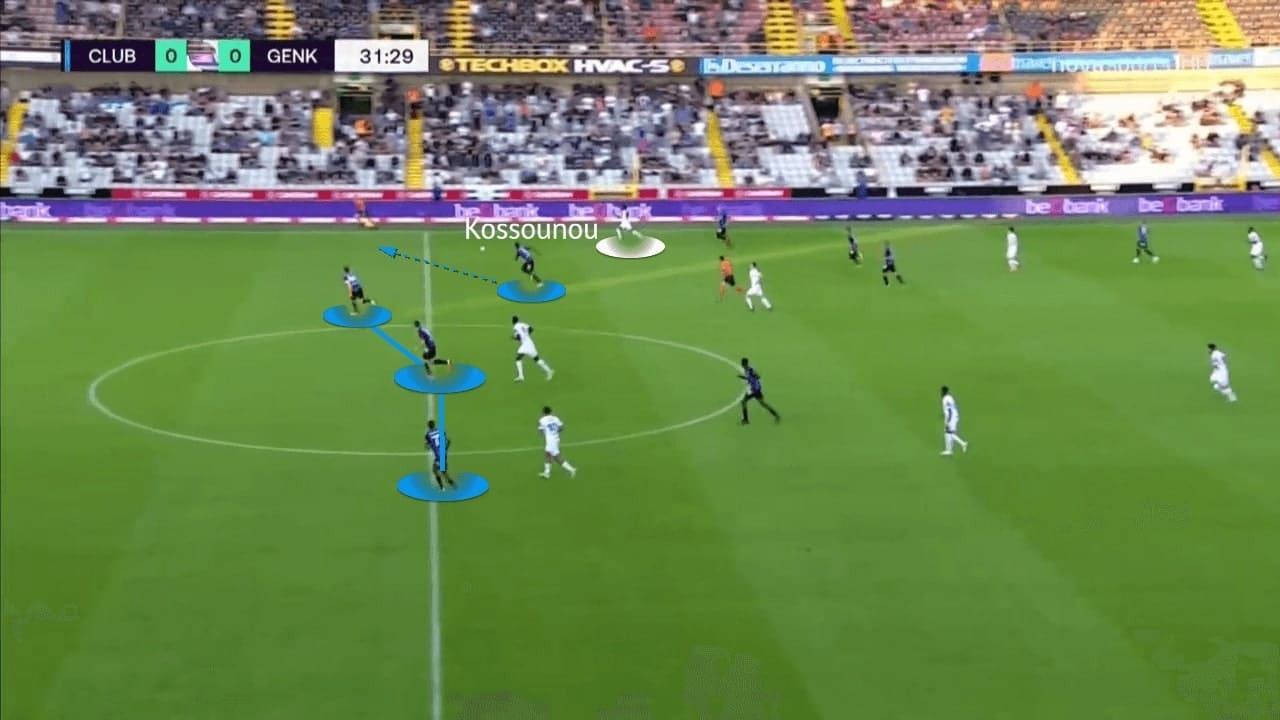
…… but Brugge did not leave the defenders exposed as contrary to Genk’s defence. As the defensive midfielder Kossounou was close to the backline, he was the player to cover the spaces behind full-backs instead.
In this image above, just four seconds after the previous one, Kossounou was going to fill the left-back position left by Ricca. With the coverage of defensive midfielders, Brugge’s backline could maintain a “+1” advantage over the oppositions centrally, it was a 3v2. If Kossounou did not move wide to fill that space then Mechele would be out of position and the other two defenders were in a 2v2, which was riskier and more dangerous.
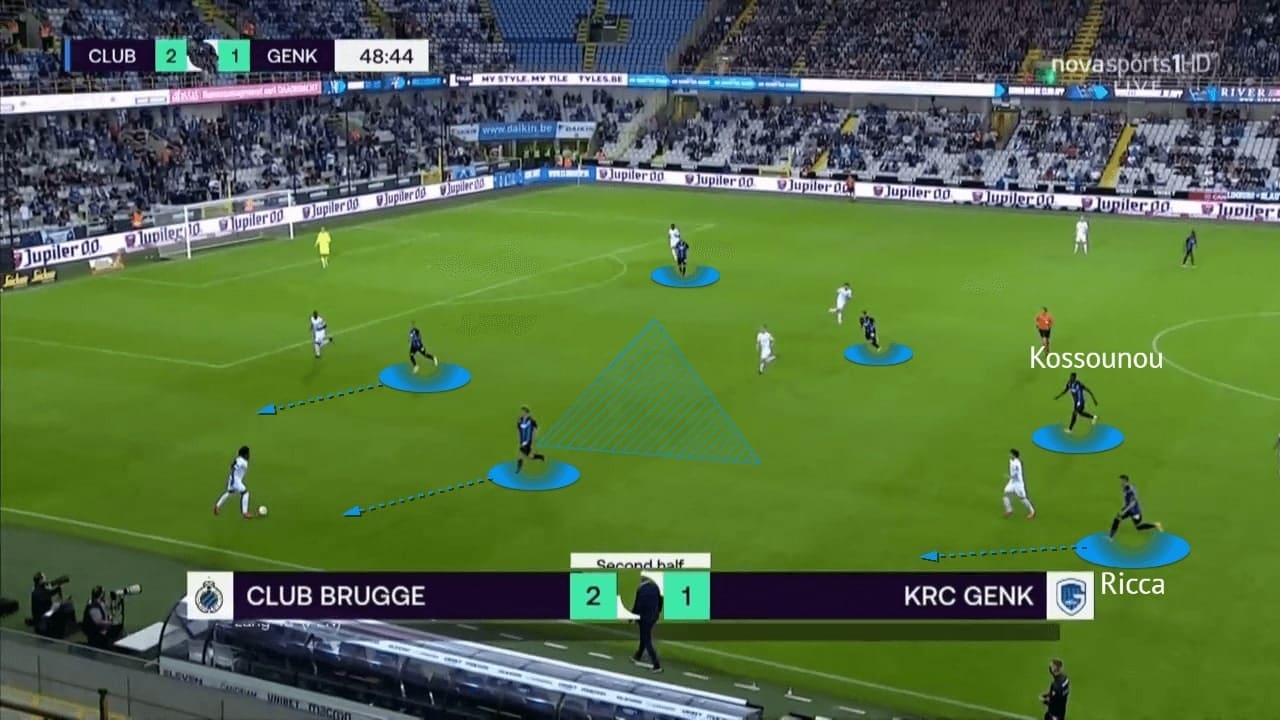
The press was crucial to Brugge’s win as it led to the third goal that almost killed the game soon after the second. In this image, the 4-2-2-2 press allowed both strikers to man-mark the centre-backs and wingers could cover the central passing lane when pressing the full-backs. Also, Ricca came high to lock the wide zones and got tight to the Genk wingers so there should not be any free player in the build-up.
Angelo Preciado was not a passing option in this scenario when he took the risk to find the right-winger – Ricca immediately pressed from the blindside and forced an error, Brugge recovered the ball high.
Apart from the Brugge players we mentioned in the above analysis, of course, the press was good as Kossounou was covering everyone in the centre. Even if the right-winger evaded the press from Ricca, Brugge still had the defensive cover.
Final remarks
The performance from Brugge were pretty good in the first official game of the season. Although the attack was not extremely efficient in the final third, the tactics they used in the construction process were unlocking the potential of the youngsters. Some individuals were very good, such as Lang’s silky skills and confidence on the ball – this caused Genk a lot of problems. The young partnership in the midfield was also a solid wall in front of the defence too – Mbamba-Muanda especially didn’t look like a 16-year-old kid.
Also, Brugge showed adaptability to different situations. At the final stages of the game, when Genk came out to attack, Kossounou could also drop to the backline to create a temporary back five, allowing Brugge to commit more numbers to press at the wide zones. Meanwhile, the centre-backs were quite fit – both Mitrović and Brandon Mechele were good at anticipating the runs of the opposition – they did not expose themselves against the through balls. Although a communication error led to the second conceded goal in the final minutes, in general, Brugge were the better side in this game.





Comments